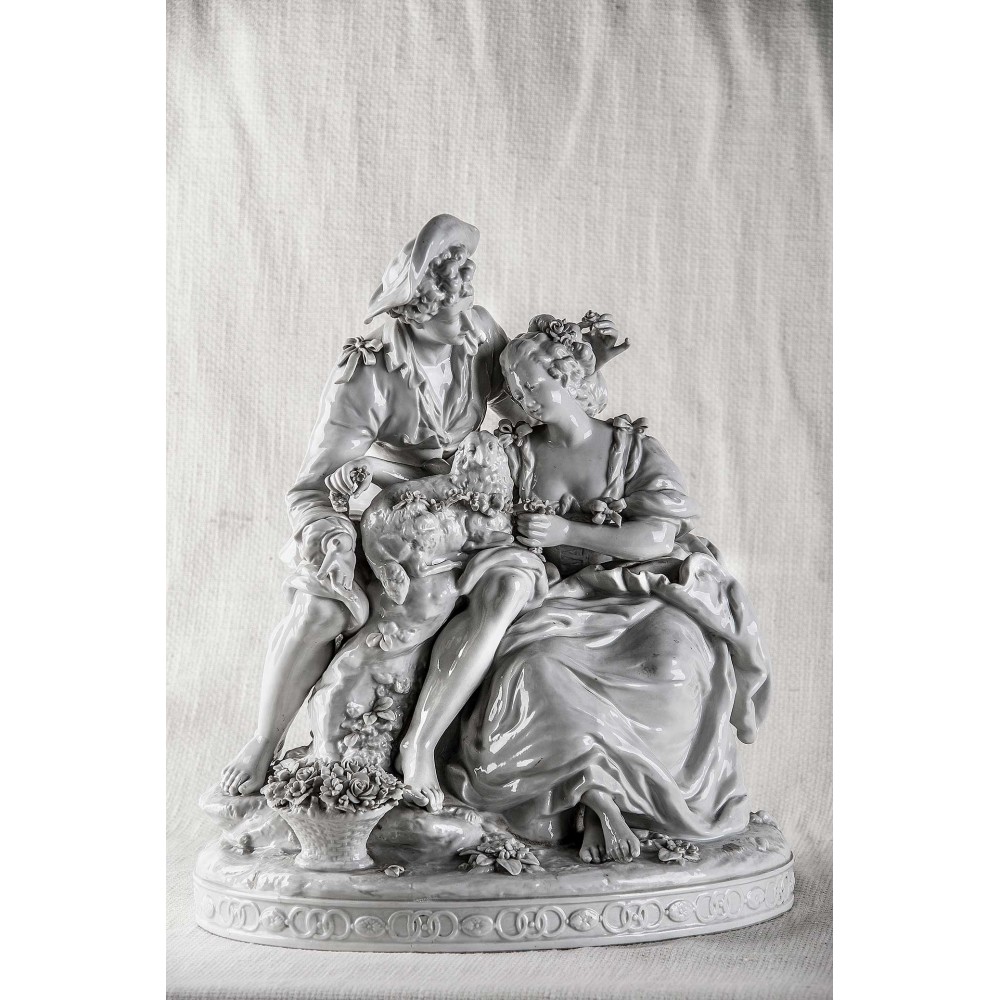











White sculpture of Capo di Monte representing a young man with a young girl holding a lamb in his arms.
White sculpture of Capo di Monte representing a young man with a young girl holding a lamb in his arms. The sculpture is signed with the typical trademark of Capo di Monte at the bottom of the sculpture. The Capo di Monte manufacture began its production in 1743. After about three years of alchemical researches, conducted by chemist Florentine Livio Vittorio Schepers, they identified the most appropriate formula mix. The production is entrusted to the pictorial decorations by Giovanni Caselli, a skilled and refined artist, and for the plastic to the sculptor Giuseppe Gricci. Through this group of people, who knew how to put together with great harmony the quality of the matter, the pictorial decoration and the sculpture, which is attributed the success of Capodimonte porcelain. In 1759 Charles of Bourbon returned to Spain, leaving the throne of Naples to his son Ferdinand who was just nine years old, and took with him all the materials, shapes and above all the artists, sculptors and painters of the Capodimonte factory and, in less than a year in a building at the Buen Retiro, resumed the processing of porcelain. It wasnt until 1773 that a new and flourishing production began in Capodimonte. The Real Manufacture of Ferdinandea activities can be divided into three distinct periods with different styles; the first period, from 1773 to 1780, corresponds to the artistic direction of the famous painter and sculptor Francesco; the second and happy period, from 1780 to 1799, coincides with the direction of Domenico Venuti who entrusted the artistic guidance to two people: Filippo Tagiolini, who dealt with the sculptures, and James Milani who oversaw the "gallery of painters. The last six years, until the arrival of the French in 1806, when the Real Fabbrica Ferdinandea terminated all its activities, were very difficult years as strongly marked by the vicissitudes of the Neapolitan Republic and financial difficulties. In May of 1807 Joseph Bonaparte signed the sale agreement for the manufacture of porcelain to a private company represented by the Swiss Giovanni Poulard Prad.